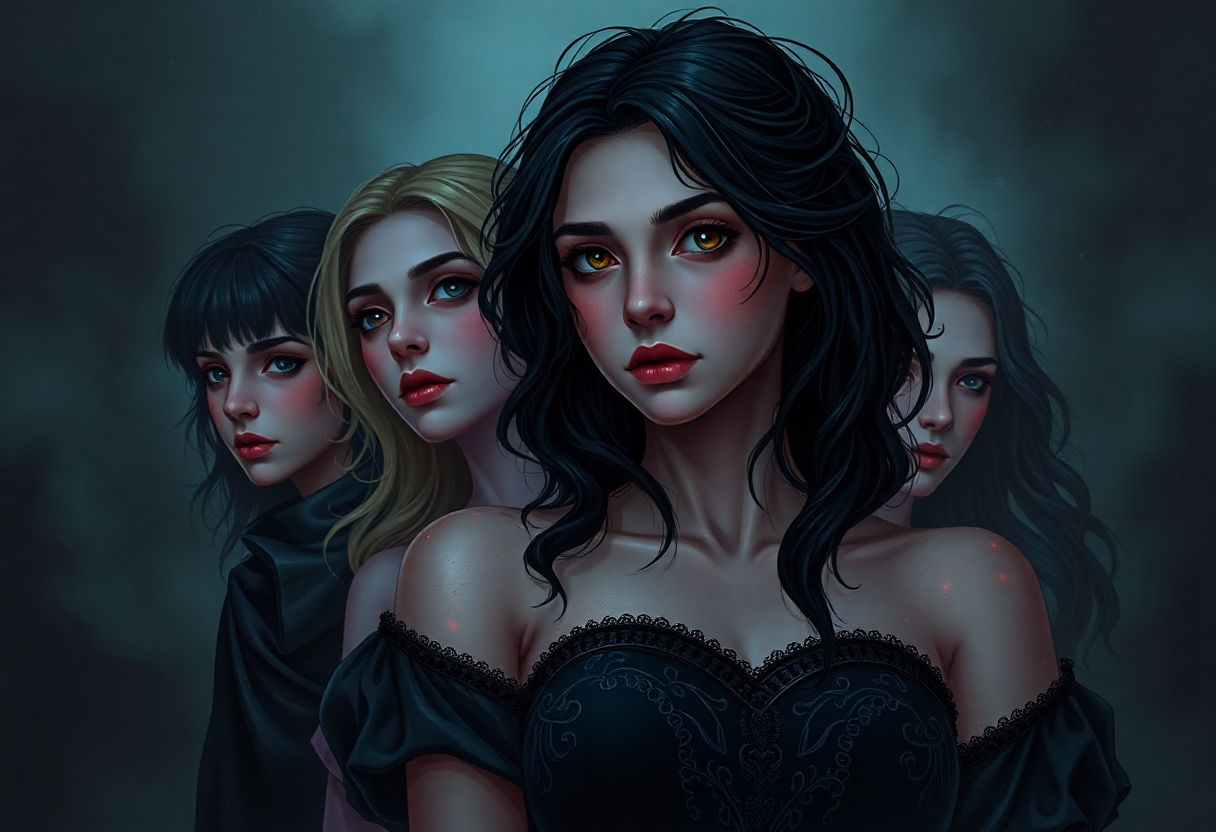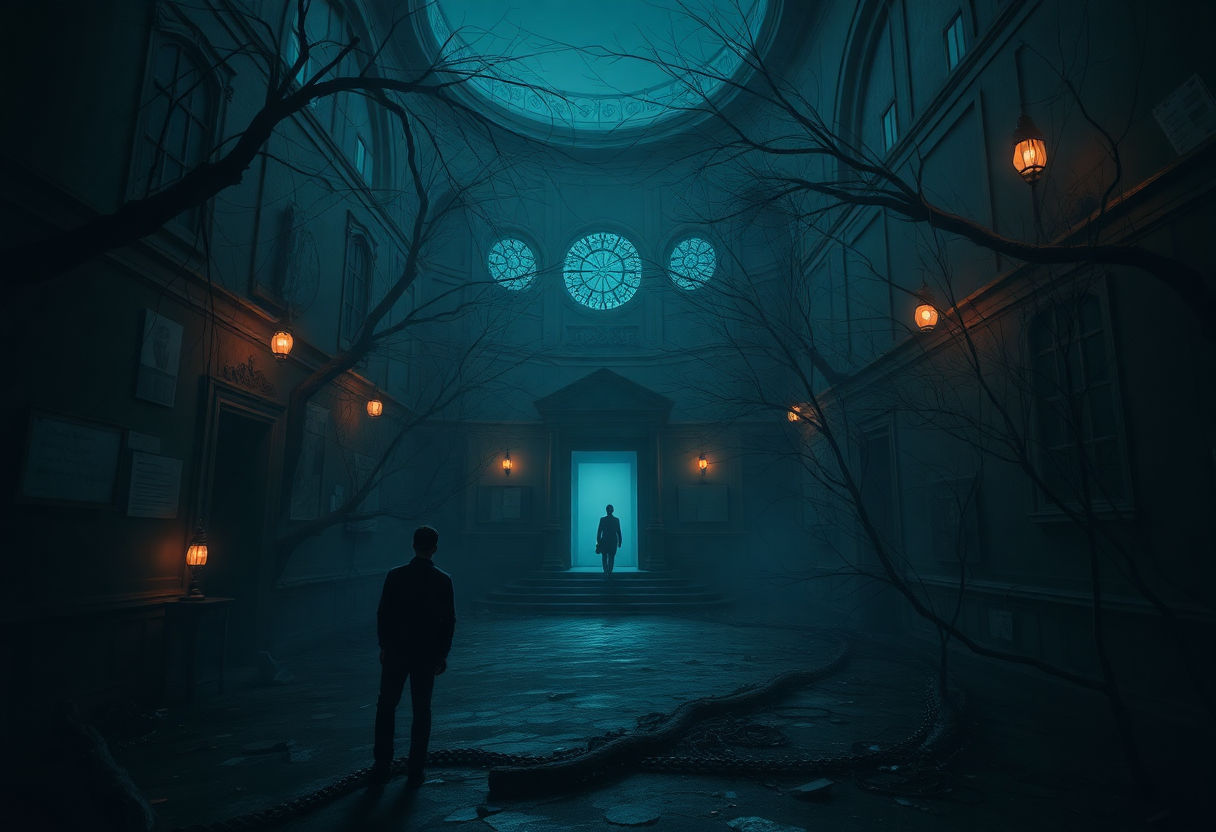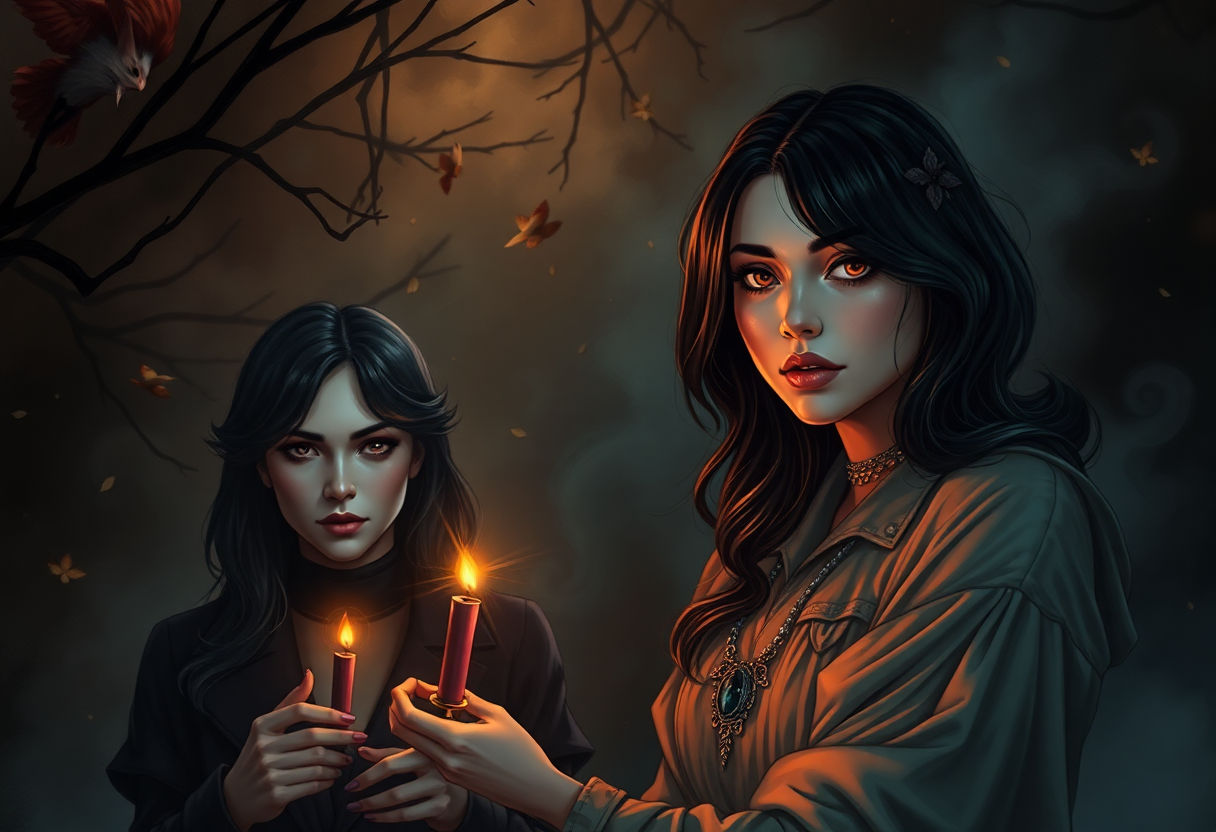The allure of dark academia combined with sapphic themes creates a captivating world filled with intrigue, magic, and complexity. This article delves into the unique elements and compelling narratives that define this genre. Readers will journey through lush descriptions of magic, unravel mysteries that deepen the plot, and explore how identity and relationships enrich these tales. As we highlight influential authors and works, the cultural impact of this transformative genre is revealed, underlining the significance of diversity and representation in literature. Prepare to immerse yourself in a narrative that challenges conventions and enchants the imagination.
Key Takeaways
- Sapphic dark academia uniquely blends intellectual exploration with sapphic themes, creating a world rich in complexity and allure.
- Magic and mystery play pivotal roles, intertwining to unveil narratives filled with imagination and suspense.
- The genre features influential works and authors who have shaped its development and cultural relevance.
- Dark academia’s aesthetic appeal enhances its representation of identity and relationships, offering profound societal reflections.
- The genre contributes significantly to cultural discourse, advocating for diversity and inclusive representation in literature.
Understanding Sapphic Dark Academia

Sapphic dark academia is a genre that intertwines the aesthetic and thematic elements of dark academia with sapphic, or lesbian, experiences and identities. This combination results in narratives rich in intellectual pursuits, emotional depth, and atmospheric settings. Defined by its exploration of complex themes such as identity, belonging, and intellectual curiosity, it creates a compelling backdrop for sapphic narratives.
One of the key characteristics of sapphic dark academia is its emphasis on academic settings, often portrayed through gothic architecture and moody, atmospheric environments. These settings are not merely backdrops but integral to the narrative, mirroring the characters’ inner lives and emotional conflicts. The genre’s settings often include prestigious universities, hidden libraries, and ancient campuses, which evoke a sense of timelessness and mystery.
In recent years, sapphic dark academia has gained popularity for several reasons. First, it provides a space where queer identities can be explored without the constraints of heteronormative narratives. This inclusivity resonates with a wider audience seeking diverse representation in literature. Additionally, the genre appeals to those interested in intellectual themes and the romanticization of learning.
Moreover, the combination of sapphic themes and dark academia aesthetics has prompted readers to examine societal norms and question preconceived notions of love, ambition, and morality. This genre challenges traditional literary conventions, offering a fresh perspective on both personal and academic growth.
As sapphic narratives continue to evolve, the genre of sapphic dark academia remains a vibrant and influential space within contemporary literature, offering a blend of introspection, academic intrigue, and passionate storytelling.
The Role of Magic in Sapphic Narratives
Magic in sapphic narratives serves as a powerful narrative device, enriching the texture of stories by intertwining philosophical musings on identity and power with enchanting mystical elements. Within the dark academia framework, magic is not merely a backdrop; it is a dynamic force that shapes both character development and plot progression.
Interwoven Themes of Magic and Love: In sapphic narratives, magic often acts as a metaphor for the characters’ personal journeys. It reflects their inner transformations and the discovery of their true selves. These stories frequently explore the idea that the magical and the mundane coexist in a delicate balance, much like the complex emotions of love and longing. Magic becomes a language through which characters communicate and understand their desires, fears, and aspirations.
Historical and Cultural Contexts: The use of magic in sapphic dark academia often draws from historical contexts and mythologies, creating a sense of timelessness and depth. For instance, the incorporation of ancient rituals or folklore enhances the narrative’s richness, allowing readers to explore alternate histories and realities parallel to their own. This blend of the esoteric and the real creates a tapestry that is as intellectually stimulating as it is emotionally resonant.
Tension and Mystery: Magic enhances the mystery inherent in these stories, often serving as the catalyst for events that challenge societal norms and question established hierarchies. It introduces an element of unpredictability and suspense, compelling characters to confront moral dilemmas and existential inquiries. Through magical encounters, characters often find themselves questioning their perceptions of reality, which in turn drives the narrative forward and deepens the reader’s engagement.
Mystery and Intrigue

In the realm of sapphic dark academia, mystery serves as the enchanting heartbeat that propels the narrative forward, wrapping each storyline in layers of suspense and revelation. Within these worlds, secrets are not merely plot devices but are intrinsically linked to the characters’ journeys and the thematic undercurrents of identity and love.
Mystery heightens the genre’s allure by driving the plots into the labyrinths of academia, where ancient tomes hide forbidden knowledge and the very architecture of old universities seem to hold whispers of the untold. It is the promise of uncovering these secrets that compels both characters and readers to delve deeper, often resulting in a transformative venture from ignorance to awareness.
The enigmatic charm often manifests through complex characters whose pasts are shrouded in mystery and whose futures hinge on the discovery of truths that challenge their existing notions of identity and desire. As these characters navigate the shadowy corridors of their environments, their interactions are filled with an exquisite tension, frequently built around undisclosed emotions and unspoken affections.
Moreover, the interlacing of mystery with academia emphasizes the intellectual pursuit intrinsic to the genre. It encourages readers to ponder profound philosophical questions, not merely as a background but as a crucial element that drives characters to question societal norms and their personal beliefs. The dance of discovery—fueled by mystery—not only captivates the audience but also intensifies the exploration of relationships and identities within this richly woven literary tapestry.
Exploration of Identity and Relationships
In sapphic dark academia, the exploration of identity and relationships forms the cornerstone of the narrative, unraveling the profound complexity of self-discovery and connection amidst the backdrop of enigmatic academic settings. Characters often grapple with questions of who they are and how they fit into the world that surrounds them, mirroring the genuine quest for understanding within real-life contexts.
The nuanced representation of identity is pivotal. Young women in these stories navigate the boundaries of gender, sexuality, and personal ambition in environments that both challenge and reflect their innermost longings. These narratives provide a platform for exploring queerness, weaving a fabric of inclusivity and belonging that resonates deeply with readers seeking representation.
Relationships in this genre are equally intricate, often reflecting the tension and allure of forbidden romance or intense camaraderie. The romantic entanglements frequently defy traditional norms, embodying complexity that can only be born from the intertwining paths of love and desire. The dynamic interplay of friendship, rivalry, and love creates a rich tapestry whereby characters manage to find bonds that are both empowering and transformative.
Moreover, the interplay of identity and relationships within the sapphic dark academia context allows for a deeper examination of societal norms and personal freedom. The internal conflicts and evolving dynamics lead to powerful character development, offering readers an intimate journey through the tapestry of human emotions. These introspections not only enrich the narrative but also challenge the reader to reflect on their own understanding of identity and connection in an ever-changing world.
Influential Authors and Works
In the realm of sapphic dark academia, several influential authors have crafted narratives that intricately weave themes of mystery, magic, and identity. Emily Danforth emerges as a pivotal figure with her novel Plain Bad Heroines, a masterpiece that delves into the complexities of queer identity against a backdrop of an eerie academic world. With a narrative that spans multiple timelines, this work highlights the tension between past and present, merging gothic elements with modern sensibilities.
Olivia Waite, known for her nuanced portrayals of sapphic relationships, has also contributed significantly to this genre. Her works are celebrated for their intricate character development and the seamless integration of historical detail with speculative elements. The portrayal of magic as both a literal force and a metaphorical exploration of love and identity adds layers to the narrative, enriching reader experience.
Tamsyn Muir‘s Gideon the Ninth pushes the boundaries of dark academia by infusing it with necromancy and cosmic horror, while still maintaining a focus on compelling female relationships. Muir’s ability to create an intense and mysterious atmosphere exemplifies the genre’s potential for depth and innovation.
Moreover, Alexis Hall’s approach to sapphic narratives in the context of academic settings illustrates the genre’s diversity. By exploring various facets of identity and societal norms, Hall’s characters navigate a world filled with intrigue and emotional complexity.
These authors have not only defined the landscape of sapphic dark academia but have also broadened its cultural and literary horizons, inviting readers to explore the enigmatic and the arcane in new and unexpected ways.
Cinematic and Aesthetic Appeal

The sapphic dark academia genre is known for its stunning cinematic and aesthetic appeal, which plays a crucial role in capturing the imagination of its audience. This genre melds elements of classic literature, art, and architecture with a distinctly moody and atmospheric style that feels timeless yet current.
At the heart of this aesthetic is the setting, often characterized by gothic structures, ivy-covered stone buildings, and dimly lit libraries that evoke a sense of history and mystery. These environments serve as both background and character, shaping the narratives that unfold within their walls. Visual elements such as candlelit study sessions, antique books, and shadowy corridors contribute to the genre’s immersive quality, drawing readers into a world where every corner holds a secret.
Equally important is the sartorial style associated with dark academia, which frequently features dark, monochromatic palettes, heavy materials like wool or tweed, and vintage silhouettes. This distinctive fashion not only enhances the visual experience but also reinforces themes of individuality and intellectual pursuit. The choice of attire often reflects the characters’ inner complexities, adding another layer to the storytelling.
The use of color is also a defining feature, with muted tones and warm hues painting a picture of nostalgia and introspection. Filmmakers and authors alike utilize these aesthetic choices to infuse their narratives with emotional depth, creating resonant stories that linger long after the final page is turned. The fusion of these visual elements with sapphic themes results in compelling stories, where magic and beauty intermingle seamlessly, enhancing the allure of the dark academia world.
Cultural Impact and Significance
In recent years, the sapphic dark academia genre has undergone a remarkable transformation, influencing cultural narratives and expanding the literary landscape. This genre not only embraces diversity through its characters and themes but also invites readers to explore complex social issues while providing representation for marginalized voices.
One of the pivotal cultural contributions of sapphic dark academia is its role in advocating for inclusivity in literature. By centering on sapphic themes, the genre challenges traditional norms and brings to light stories that have been historically underrepresented. This focus on diverse narratives enriches the literary canon and underscores the importance of visibility for the LGBTQ+ community.
Moreover, the genre fosters a dialogue around identity, pushing readers to ponder questions of self-discovery and authenticity. Through its atmospheric settings and introspective characters, sapphic dark academia cultivates an environment where themes of gender, sexuality, and identity are explored with nuance and depth. These narratives equip readers with the tools to better understand themselves and others, fostering empathy and community.
Additionally, the genre enhances the cultural narrative by blending timeless elements of dark academia with contemporary issues, creating a compelling balance between traditional gothic aesthetics and modern-day conversations. This juxtaposition invites a broader audience to engage with the themes of antiquity while staying relevant to today’s societal challenges.
In conclusion, sapphic dark academia is not merely a subgenre of fiction but a catalyst for cultural change, making significant contributions toward a more inclusive and representative literary world. Its impact resonates beyond the page, fostering greater awareness and understanding in a diverse society.
Conclusion
In exploring the enchanting blend of magic and mystery in a sapphic dark academia world, we have seen how this genre offers a unique storytelling tapestry rich with cultural and emotional depth. The intersection of these elements crafts narratives that challenge conventions and celebrate diversity and representation. As this genre continues to evolve, it promises to inspire a new wave of literature that champions inclusivity and authentic expressions. For readers and writers alike, embracing these powerful themes can foster greater understanding and connection in our increasingly diverse society.
Frequently Asked Questions
What defines the genre of sapphic dark academia?
Sapphic dark academia is characterized by its fusion of scholarly pursuits with gothic and mysterious aesthetics, infused with themes of LGBTQ+ romance or identity. It embraces a moody, intellectual atmosphere often heightened by elements of magic and the exploration of complex emotions and relationships.
How does magic enhance narratives in sapphic dark academia?
Magic in sapphic dark academia serves as a symbolic tool that deepens the narrative, embodying the characters’ inner struggles and aspirations. It often highlights the mystical and unexplained, adding layers of intrigue and facilitating character development through fantastical experiences.
Why is the theme of mystery significant in this genre?
Mystery is a cornerstone in sapphic dark academia, intensifying the suspense and encouraging deeper engagement with the plot. It challenges characters to uncover secrets, both internal and external, thus driving the storyline and enhancing emotional and intellectual discoveries.
Why has sapphic dark academia gained popularity recently?
The genre has seen a rise in popularity due to its diverse representation and its ability to resonate with modern readers seeking complex, inclusive stories. Its blend of romance, academic intensity, and supernatural elements provides an escape with meaningful reflections on identity and belonging.
What themes of identity and relationships are commonly explored?
Sapphic dark academia often explores themes such as the search for self-identity, the nature of love and friendship, and the societal pressures faced by LGBTQ+ individuals. These themes are intricately woven into the narratives, offering relatable and poignant journeys of personal discovery and acceptance.



